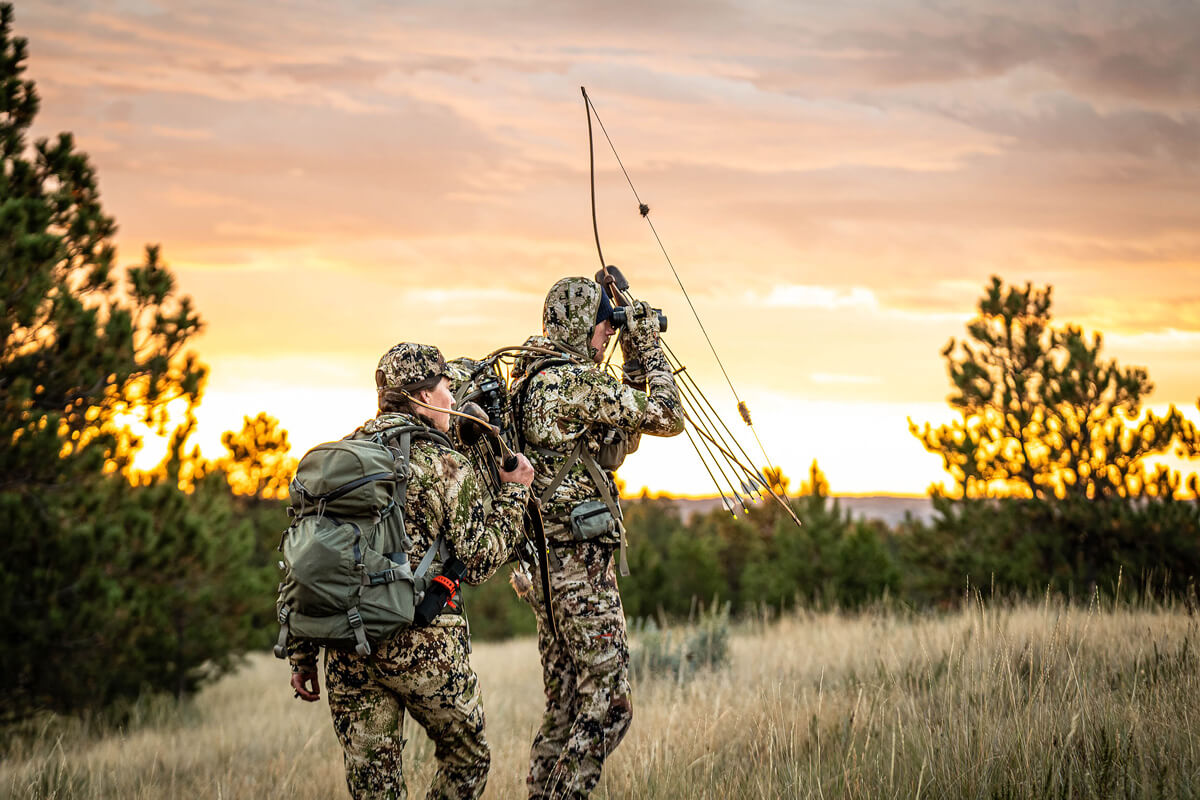What clothes should you wear for hunting?
The theory behind camouflage clothing is to blend into the surrounding forest or jungle foliage, making it difficult for the prey to spot you. It should be noted that camouflage does not equate invisibility – so do not assume you will be totally undetected – but this should provide an added layer of protection during your hunt.
When choosing a camouflage pattern, consider what type of creature and terrain you hope to hunt and base your choice off their coloring and preferred habitat. For instance: if you plan on hunting in the African Savannah where the grasses are shorter than normal, choose a pattern with shorter grasses such as Operational Temperate Woodland (TW). If your target is more likely found in dense underbrush such as thick brush or heavy forestation, use a pattern with larger vegetation such as Arid (AR).
Bright colors will help you stand out and may scare away prey
When purchasing camouflage clothing, opt for darker colors such as black. Bright colors may be eye-catching to animals and will contribute to your visibility when in the wild. This can scare off or confuse game and make them more difficult targets. Make sure to take special care during the process of selecting clothes that fall under this category because it is common for bright colored textile materials (such as orange) used by hunters to be included in camouflage patterns due to their ease of availability. These bright pieces should be removed before you step outside or at least placed on areas where they are less likely to attract attention (i.e.: pockets).
Avoid wearing green clothing while hunting
Although green is one of the common colors found in camouflage patterns, it is best to avoid wearing this color while hunting. Green is a common color found in various types of vegetation and as such, animals that may be familiar with this color may become more suspicious or frightened if you are dressed in this shade. Instead, opt for darker colors such as black or brown when choosing camouflage clothing.
Dress for the terrain and environment you wish to hunt in
Although not all creatures have adapted to life in extreme weather conditions, most inhabitants of Earth can be found somewhere on a spectrum between very hot and very cold environments. When planning a hunting trip, dress accordingly by investing in several sets of camouflage clothing appropriate for varying degrees of heat and cold. During colder periods, make sure your clothes are insulated to provide you with warmth and during periods of intense heat, use clothes that are made from lightweight fabric that allows your body to breathe.
Wear clothes that are comfortable and allow you to move freely
It is important to wear clothes that are comfortable and allow you to move freely. If your clothing inhibits your mobility, it may prevent you from making a kill or even worse: cause you injury as a result of decreased coordination. When outfitting yourself for the hunt, avoid wearing anything that may limit your movement such as heavy jackets or necklaces/bracelets. Instead, opt for lighter fabrics such as cotton which helps maintain breathability and comfort.
Make sure your clothes are properly fitted so they don’t make noise or get in the way
When hunting, it is important to camouflage your figure as much as possible. If your clothes are ill-fitting and/or bulky, they may catch on branches resulting in them making noise which will alert animals to your presence. In addition, loose clothing or accessories such as scarves can get caught up in shrubbery which may further expose you during the hunt. Clothing should fit snugly but not tightly so that it doesn’t impede movement and sticks out from your body.
Stay warm in cold weather climates by wearing layers of clothing
One of the most important things to consider when hunting in cold weather climates is to stay warm. Layers of clothing are much more effective at keeping you warm than a single thick coat because they trap heat closer to your body and allow heat to be retained within the layers closest to your skin. Avoid wearing too many layers though because this can cause overheating, which may leave you feeling uncomfortable or even fatigued during the hunt. Opt for several thin layers instead so you can remove them if necessary without sacrificing warmth by taking off thicker coats.
Be prepared for any type of terrain by wearing the right shoes
Although many hunters opt to go barefoot while hunting, it is highly recommended that you wear shoes instead. This is because shoes offer protection against various types of terrain which can help prevent injuries from occurring out in the field. In addition, wearing boots may also provide increased stability and support for your ankles which prevents you from slipping or becoming injured when traversing rough land. If possible, try to find a pair that are lightweight but still durable enough to protect your feet from sharp objects such as rocks or sticks on the ground.
